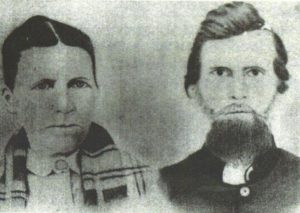Mary Meggison and John P. Chappell (1861)
12 July 2022
Suzanne Farrar very kindly sent me these images of Mary Meggison (1830-1881) and John P. Chappell. They were married in Chambers County, AL in 1850 and were farming there by 1860. They had 6 children by 1861.
John was reported missing and presumed killed in action at Sharpsburg on 17 September 1862 while serving as a Private in the 14th Alabama Infantry.
G.W. Bynum, 2nd Mississippi (c. 1861)
10 July 2022
Author and blogger Mike Brasher kindly provided this excellent photo of Private George Washington Bynum, who was with the 2nd Mississippi Infantry at Boonsboro and Sharpsburg, MD in 1862. We was later an officer of Mississippi Cavalry and survived the war to farm in Alcorn, MS and serve as Mayor of Corinth from 1896-98. The original of this photograph is owned by Mark W. Blackburn.
Lt William Horton (1862)
6 July 2022
5 days after his 31st birthday – on 17 September 1862 – First Lieutenant William Horton of Company I, 16th Connecticut Infantry, from Stafford, CT, was killed at Antietam. This fine photograph of him is courtesy of descendant Laurie Mack, and was forwarded to me by John Banks.



